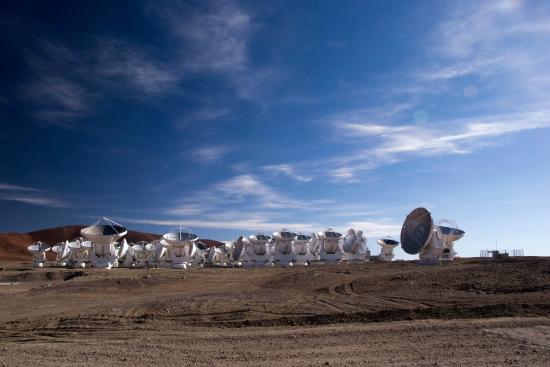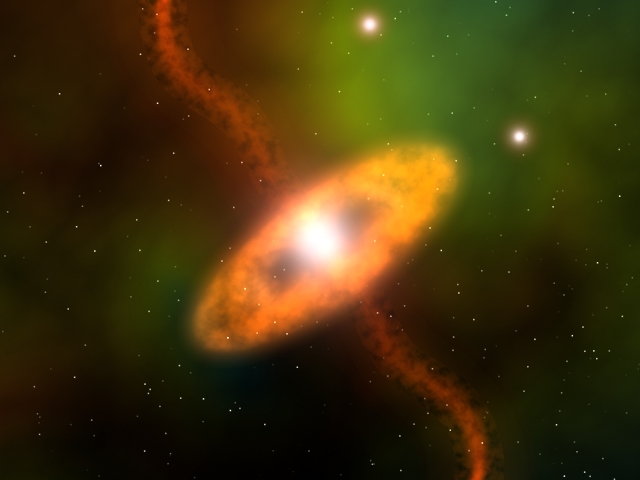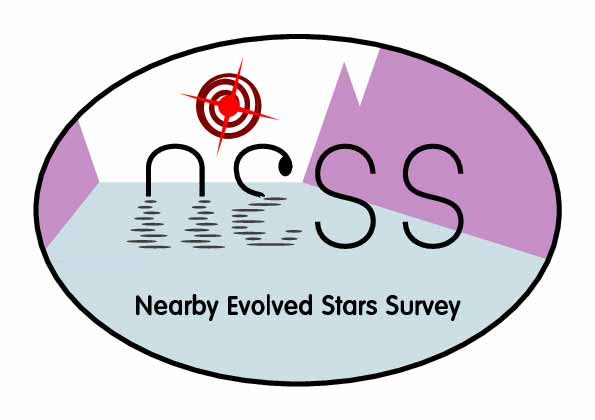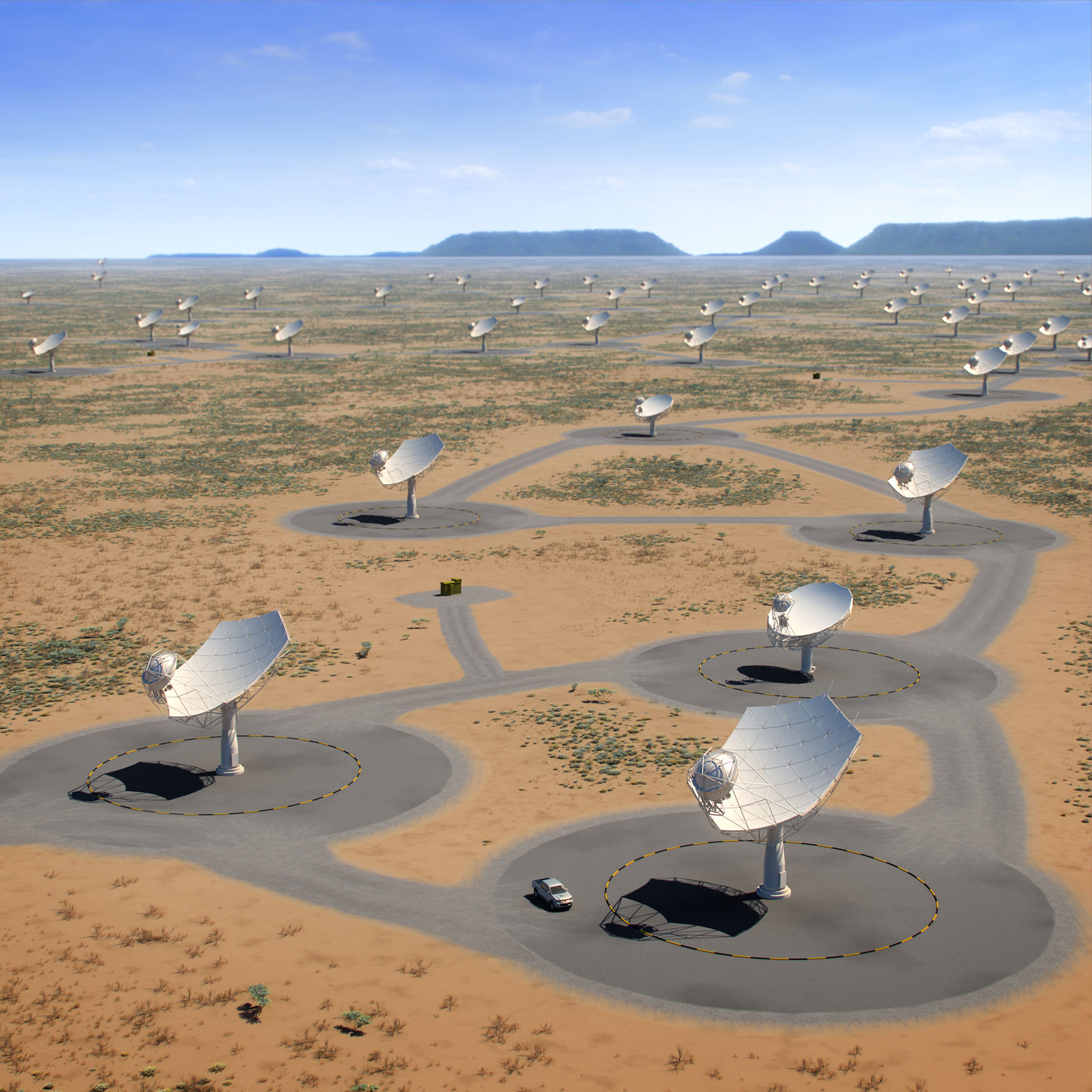Japanese | English
Astronomical facilities
#1. VERA

Four 20 m dish telescopes in Japan performing very long baseline interferometry (VLBI), that are specially equipped with the dual-beam receiving system, dedicated for high precision trigonometry of radio sources, and have been operated since 2002.
Our team is contributing to operation of one of the VERA telescopes located in Iriki, Kagoshima for developing our widespread academic skills, such as scientific operation of radio telescopes including research planning and proposing, astronomical engineering including hardware and software development, and any kind of activities related to public and high level education and outreach.
Link to the official VERA Home Page
#2. NRO 45 m telescope

Millimeter large telescope operated since 1982 to observe 20-116~GHz emission in high sensitivity. This also performs as one of key stations of VLBI networks such as
EAVN. Its large aperture, optics, and cabins also enable us to perform new instrumental development.
Our team is often visiting the Nobeyama Radio Observatory for high sensitivity single-dish and VLBI observations. One of our ongoing projects is FLASHING (see FLASHING project). Our team is also conducting a new development of the triple-band simultaneous observation system (see HINOTORI project).
Link to the official NRO Home Page
#3. KaVA
The KVN and VERA Combined Array (KaVA) is one of the most dedicated array of radio telescopes for VLBI observations in which as many telescopes as possible can be synchronized for tracking the same object in the same radio frequency tuning and in the same signal recording format. The colleagues of KaVA are regularly communicated since early 2000s, and now operating not only the KaVA telescopes but also Deajeon Correlator in Daejeon, Korea, which synchronizes radio signals received by the KaVA/EAVN telescopes and whose data products are delivered to astronomers.

Our team has lead one of the KaVA's Large Program projects, KaVA ESTEMA (Expanded Study on Stellar MAsers), in which 80 long period variable stars hosting bright water and silicon monoxide maser lines were observed in order to take snapshot images of the maser sources and select the stars suitable for the intensive monitoring with the EAVN in new ESTEMA (EAVN Synthesis of Stellar Maser Animation) project.
Our team is tightly communicating with colleagues working in KaVA for the state-of-the-art technology in VLBI observations enabling simultaneous multiple frequency-band observations and high accuracy astrometric observations.
Link to the official KaVA Home Page
#4. EAVN
The East Asia VLBI Network (EAVN) is a VLBI network that has been operated for scientific observations since 2018. Researchers and students can access the opportunities of EAVN observations for their astronomical research exploring and monitoring compact celestial objects without any payment for running cost for observation execution if the proposed observations are approved with scientifically high priority. The EAVN is composed of radio telescopes distributed in East Asian countries including Japanese VERA, Korean's KVN, and Chinese CVN, but also has collaborations with telescopes in the world such as South-east Asia, Europe, North America, and Oceania.
 Figure credit: An T., Sohn B.W., & Imai H., Nature Astronomy 2, 118 (2018)
Figure credit: An T., Sohn B.W., & Imai H., Nature Astronomy 2, 118 (2018)
Our team is leading one of the EAVN's Large Program projects, ESTEMA (EAVN Synthesis of STellar Maser Animations), in which the selected long period variable stars hosting bright water and silicon monoxide maser lines have been intensively monitored .
Our team is also contributing to new capability of the EAVN observations in higher and lower radio frequency bands through regular communication with colleagues working in the EAVN and service of with commissioning (test) observations.
Link to the official EAVN Home Page
#5. ALMA
Atacama Large Millimeter-submillimeter Array (ALMA) is one of the international astronomical observatories with Japanese major contributions to its construction and scientific operation. Since its scientific operation starting in 2011, it has deeply explored the cold and warm universe in millimeter and sub-millimeter radio emission, where are observable with telescopes at high altitude sites to minimize radio attenuation by Earth's atmosphere.

Our team often uses this facility to further explore what we have discovered in our VLBI observations. One of our most scientifically striking discoveries was made by observing the target source with this facility for only half hour (see this research report).
Link to East Asia ALMA Regional Center
#6. ASKAP
Australian Square Kilometre Array Pathfinder (ASKAP) is a one-percent-scale facility of the Square Kilometre Array (SKA), composed of 36 12-m dish telescopes distributed in the flat and dry area of Western Australia. The Phased Array Feeds (PAFs) yields a field of view of 30 square degrees in each telescope.

Our team has some collaborations with colleagues working on ASKAP. One of them is the Galactic ASKAP Spectral Line Survey (GASKAP). They are good opportunities for sustainable communications with colleagues and people in Australia.
#7. RadioAstron
Russia-lead space VLBI project that had been operated during 2013--2019 with a 10-m disk spececraft "Spectr-R". This is the second space VLBI program after the successful Japan-lead VSOP (VLBI Space Observatory Programme) project. RadioAstron has yielded the highest angular resolution of 7 microarcseconds in any astronomical facilities.

Our team is leading one of the RadioAstron observations towards bright water maser sources associated with massive-star forming regions in order to elucidate the mechanism to generate the most powerful cosmic maser emission and its relation to the growth process of massive young stars.
Projects
#1. ESTEMA

The EAVN Synthesis of Stellar Maser Animations (ESTEMA) project is conducting decadal, intensive monitoring observations of circumstellar SiO and H2O masers with the EAVN since 2018. The animation productions for all the maser lines observable using VLBI in the 22, 43, 86, and 129 GHz bands will enable us to visualize and elucidate the dynamics of stellar mass loss in great detail, such as radial acceleration with shock propagation driven by stellar pulsation and inhomogeneity of the mass loss flow due to the inhomogeneity of the stellar surface, through understanding the mechanisms of the maser excitation.
#2. FLASHING

The Finest Legacy Acquisitions of SiO-/H2O-Maser Ignitions by Nobeyama Generation (FLASHING) is conducting intensive monitoring observations of silicon-monoxide (SiO) and water (H2O) masers associated with "water fountain" sources, hosting collimated, fast bipolar jets from dying stars. There are only less than 20 water fountain sources known in the Milky Way Galaxy, indicating that they are at the transition phase within only 100 years when dying stars stop their most active mass loss and evolve to the central stars of planetary nebulae. FLASHING aims to monitor in real time the rapid evolution of those stars through temporal evolution of the maser spectra and maser spot distributions. The Nobeyama 45-m telescope is used for detecting faint H2O and SiO masers with its high sensitivity and the special quasi-optics developed in the HINOTORI project.
#3. NESS-NRO

The Nearby Evolved Stars Survey (NESS) is an international collaboration aiming comprehensive radio mapping of the circumstellar envelopes around nearby long period variable stars using several optical and radio telescopes including radio interferometers, such as the James-Clark-Maxwell Telescope (JCMT) GEMINI, the Submillimeter Array, Large Millimeter Telescope (LMT), and ALMA. NESS-NRO is one of the NESS observations using the Nobeyama 45 m telescope that had been conducted during 2018 March--2023 March. NESS-NRO focuses its observation targets on carbon monoxide lines in the lowest rotational transition (J=1->0) at 110 and 115 GHz in order to trace the coldest gas that is distributed in the outer parts of the circumstellar envelopes and may have the record of the stellar mass loss history.
#4. HINOTORI

The Hybrid Integration Project in Nobeyama, Triple-band ORIented (HINOTORI) aims to upgrade the optics and the VLBI backend system in the Nobeyama 45 m telescope in order to realize the triple-band (22/43/86 GHz) simultaneous receiving system. Using this system, the 45 m telescope will join the ESTEMA project. HINOTORI has been conducted in collaborations with colleagues of Kagoshima University, Yamaguchi University, Osaka Metropolitan University, and the Naotional Astronomical Observatory of Japan in Mizusawa and Nobeyama.
#5. SKA

The Square Kilometre Array (SKA) is the world's largest, next generation radio telescope array operated in South Africa, Australia, and neighbor countries hosting radio antennas. The SKA construction was started in 2022. Our team joins the Japan SKA Consortium (SKA-JP) in order to realize Japanese contributions to the constructions of the SKA and participate scientific researches with the SKA and its "precursors" such as ASKAP (Australia) and MeerKAT (South Africa). Japanese VERA is one of the SKA Pathfinders used for new engineering developments and scientific demonstrations in the construction phase of the SKA.
#5. International Collaborations in Observations and Researchs
![]()
Our team is participating other international projects as an associate member. The team members will have opportunities of new collaborations with these projects for their oversea visits and future careers. Our human networks with international friends in radio astronomy and radio interferometry will make us enjoy a wide variety of research works.